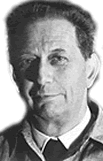Organisms
have a dynamic relationship with their environment; they modify it and
adapt to it.
Adaptation can take place quickly. Genes can be turned on and off, proteins activated or inactivated.
For example, bacteria can
respond rapidly to presence of specific molecules in their environment
by altering their movements.
|
Your
mouse
acts as a source of the chemoattractant; |
|
Very rapid adaptive behavior is based on changes in RNA and protein stability and the post-translational modification of proteins. together these can produce rapid changes in cellular behavior.


